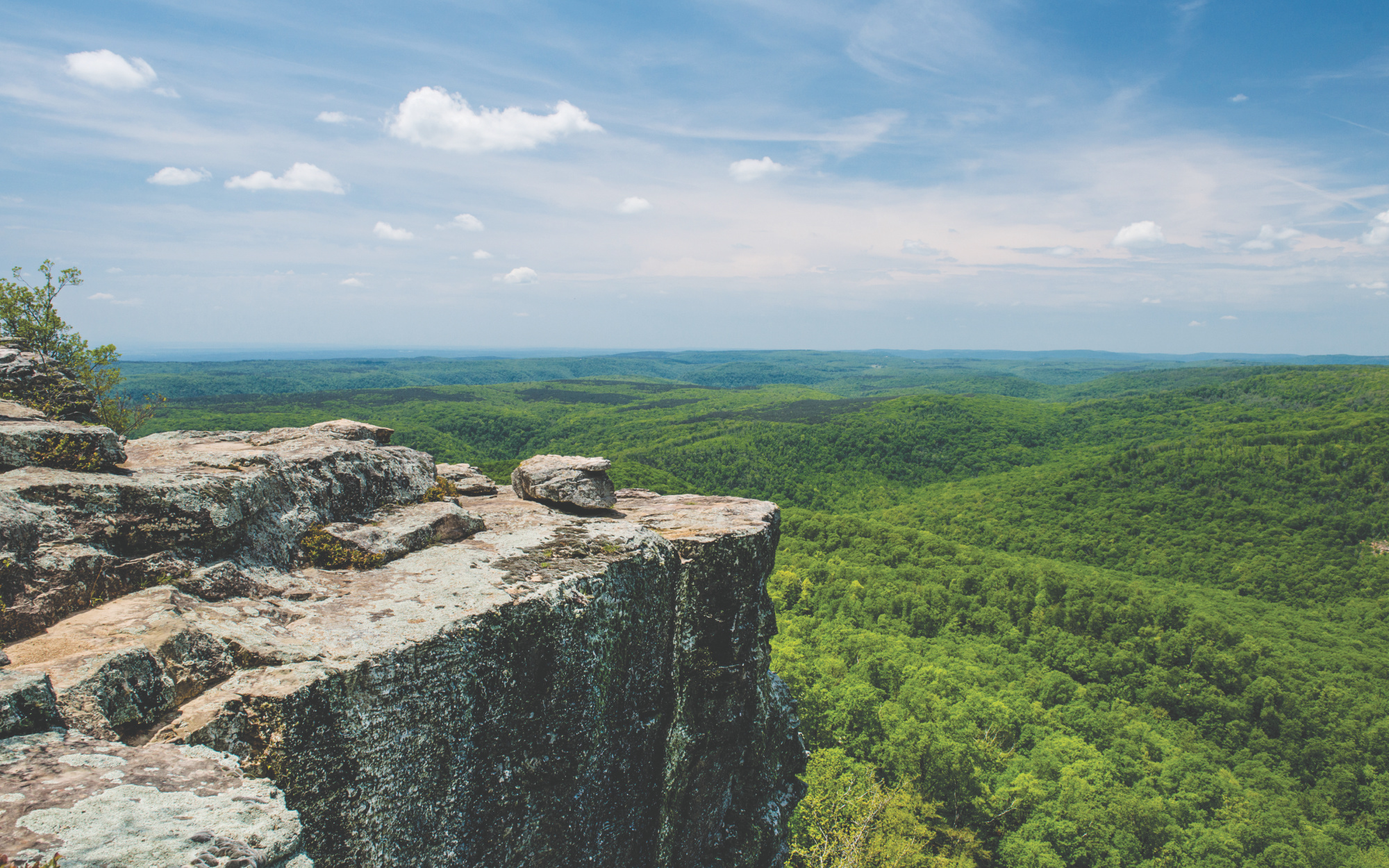River Valley hike aficionados are lucky to have the renowned Ozark Highlands Trail (OHT) right outside their back door. The U.S. Forest Service has referred to the OHT as “one of the most scenic trails in the U.S.,” and Backpacker magazine ranks it as one of the best thru-hikes in the country, placing the Ozark Highlands Trail in a class all its own. These accolades are further supported by sign-in sheets collected at trailhead registration stations, which have recorded visitors from thirty-one states and internationally.
The number of hikers will grow exponentially next year when the OHT extends to the Missouri border. At that point, the 320-mile OHT will connect to Missouri’s Ozark Trail for a combined 700+ mile route. Collectively known as the Trans Ozark Trail (TOT), it will join the ranks of the Appalachian Trail, Pacific Crest, and John Muir Trail as a destination for thru-hikers worldwide.
A TRAIL IS BORN
The first spade of dirt for the OHT was turned in 1977. With funding from the U.S. Forest Service, initial trail construction was performed by various government-funded youth employment programs, such as Young Adult Conservation Corps and Youth Conservation Corps.
In 1981, with only forty miles of the initially proposed 164 completed, the program’s funding ran out. That fall, with a defined objective to build, maintain, and enjoy the OHT, the Ozark Highlands Trail Association (OHTA) was created. With founder Tim Ernst leading the charge, the group took over the construction and maintenance of the trail using a volunteer workforce. Over the years, the OHTA has grown to over 450 members.
Many hikers believe once a trail has been constructed, foot traffic alone will keep the corridor open. However, this is not the case; it is an ongoing commitment. In 2023 alone, the group devoted over 5,000 volunteer hours to maintaining the trail.
TAKE A HIKE
Whether planning a multi-day excursion or just a day in the woods, the OHT offers an opportunity to escape the hustle and bustle of everyday life and enjoy the tranquil solitude of the serene Ozark Forest. The OHT begins at Lake Fort Smith State Park. It’s important to note that the first five miles of trail are within the park’s boundary and do not allow camping; however, after this, hikers are on national forest land, and camping is permitted anywhere.
The OHTA maintains well-defined pathways, marking the route with periodic white metal markers attached to trees, which allows hikers to devote their thoughts and senses to spotting wildlife and enjoying the scenery rather than searching for the trail. By following Tim Ernst’s Ozark Highlands Trail Guide, hikers are sure not to miss the many natural highlights along the route, as he points out the SSS (special scenic spots) with his easy-to-follow narrative of the trail.
As the OHT weaves its way through the Ozark National Forest mountain peaks, it offers expansive scenic views, and through deep wooded hollows with babbling clear streams, it crosses forest roads and highways. This makes it very accessible when planning your outings. Rather than repeating the scenery on an out-and-back hike, hikers can leave vehicles at road crossings along the OHT for a point-to-point trek.
In its goal to reach the Missouri border, the OHT incorporates the Buffalo River Trail. This 43-mile path is filled with bluff views into the drainage of the Buffalo River, America’s first national river. Following this, the OHT includes a 16-mile trek through the Lower Buffalo Wilderness Area. Currently, the National Parks Service has not allowed the construction of a trail through this area, so hikers will be bushwhacking, as in hiking off-trail. As I mentioned earlier, the OHT has something for everyone. Tip: Purchase Ozark Highlands Trail Route Lower Buffalo Wilderness by Duane Woltjen at the OHTA website. It includes maps, waypoints, and GPS coordinates to route you through this section of the OHT.
Once through the Lower Buffalo Wilderness, hikers are back on a manmade 32-mile trail through the pristine, secluded Sylamore section. For the foreseeable future, the OHT will include a variety of experiences on the remaining 60-mile trek to the Missouri border, including a mix of completed trails, road walks, a river ferry crossing, trails under construction, and flagged proposed trails. Enjoy the adventure as you trek onward to finish the entire OHT!
If you want to join the OHTA family in their effort to create an enjoyable outdoor experience for visitors to the Ozark Forest, visit ozarkhighlandstrail.com.




